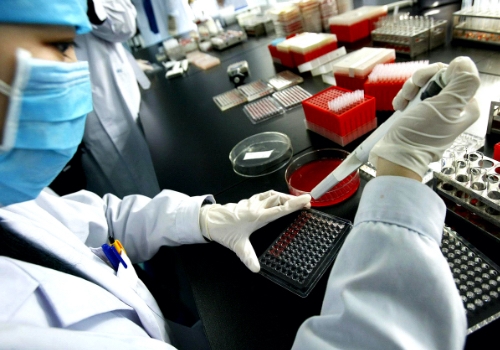When an earthquake strikes, it shakes up everything. Then come equally violent aftershocks, exposing shaky foundations long after the initial event. In many ways, the COVID-19 pandemic has been like that earthquake — unearthing deep flaws and weakening the very foundation on which healthcare has been built.
Much like earthquake-resistant infrastructure and smart engineering can counteract future seismic shifts, the time has come to redesign the current healthcare ecosystem. Fundamental to this is changing our approach to healthcare from “sick” care to “well” care. Funding healthcare in a way that incentivises prevention, screening and better disease management will allow us to strengthen our collective response to disease outbreaks before they reach epidemic levels.
Early lessons from COVID-19 show that the absence of a long-term view can hamstring preparedness, create inefficiencies and result in needless deaths.
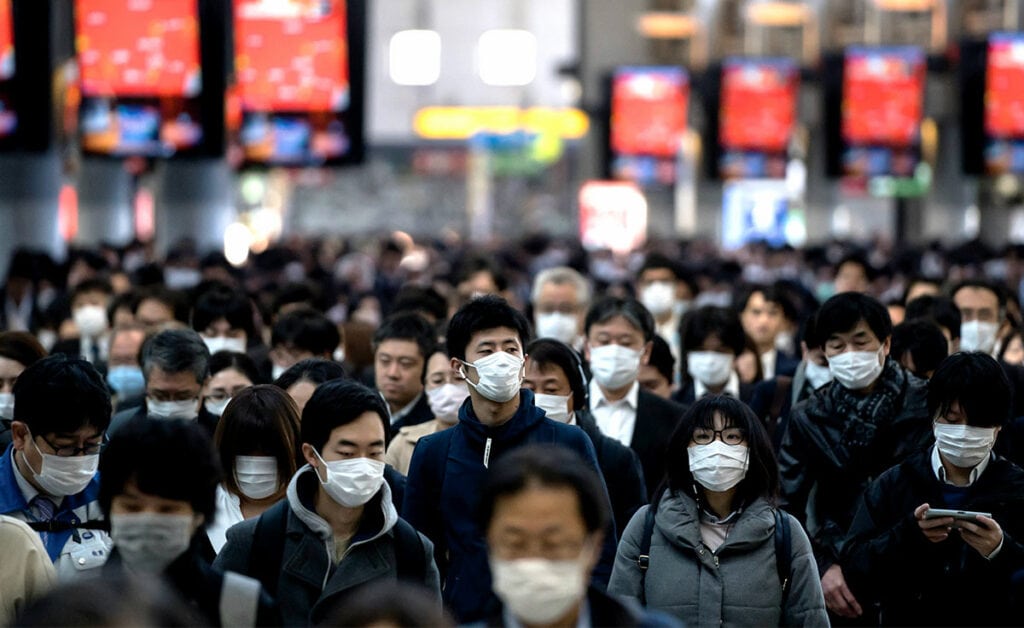
Roche Diagram magazine explores how COVID-19 could potentially transform healthcare in Asia Pacific.
What Will it Take for Healthcare to Evolve?
Based on the United Nations Conference on Trade and Development’s estimates, the global economic slowdown caused by the coronavirus outbreak is likely to cost at least USD 1 trillion.1 While the direct and most visible impact of this will be in reduced healthcare spending by governments around the world, the consequences of a combined health pandemic and global recession will be catastrophic for developing countries, (many in Asia) which are already struggling with basic healthcare delivery.
The global Epidemic Preparedness Index (EPI) published in the British Medical Journal (BMJ) Global Healthnotes that Western Asia and Southeast Asia remain vulnerable to disease emergence, particularly from animal transmissions.2 As an economic powerhouse, Asia Pacific has seen exponential growth and development, but the rapid urbanisation could come at a high human cost as the region’s risk of infectious diseases continues to rise.3 The flip side of this economic growth has been the long-term repercussions of the growing number of epidemics — loss of productivity as a result of deaths and chronic debilitating illnesses, reduced economic migration and decreased foreign investment.
The Cost of Ignoring Infectious Diseases
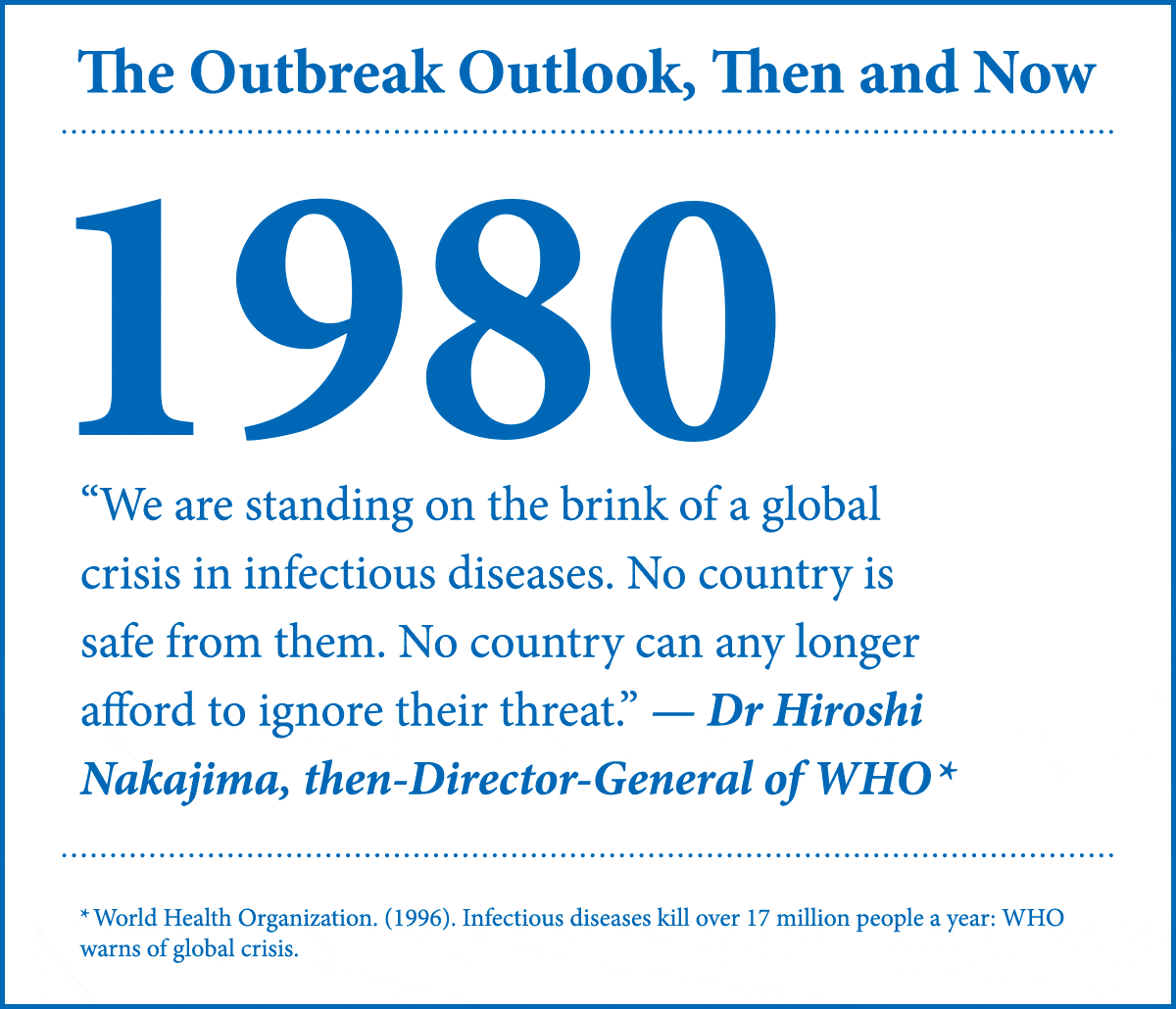
The absence of a direct and obvious link between disease control and societal health can make it difficult to sustain public health policies and therefore, funding. The cost versus benefit planning methodology in the context of healthcare disregards the knock-on effect of poor preparedness — a decision that comes at a heavy price.
In the last three decades alone, there have been at least 30 new infectious diseases, many of which have no known treatments, cures or vaccines.4 Yet there continues to be a greater focus on tackling non-communicable diseases (NCDs), in some cases by deprioritising infectious disease management.
Tuberculosis (TB), for instance, has been responsible for the death of more people than any other infectious disease; over a billion deaths in the last 200 years.5 Without a substantial increase in investments for TB prevention, diagnosis, care and treatment — projected at USD 25 billion until 2030 against the 2017 expenditure of USD 8.3 billion — member states of the World Health Organization (WHO) Southeast Asia Region (SEAR), which have the highest global TB burden, will find it difficult to make significant progress.6
Although some infectious diseases like smallpox and polio have been successfully eradicated, many represent an unending global health challenge. The burden of infectious diseases can stymie societal health, reversing decades of progress made in the management of diseases. A new Economist Intelligence Unit report suggests the pandemic has severely affected cancer care including screening, diagnosis and treatment.7 However, such outbreaks also take a toll on the management of other infectious diseases, and on already vulnerable populations. Disruptions to healthcare delivery in the case of HIV, for instance, has slowed down prevention and testing services from reaching the groups that most need them, according to the WHO.8
Health systems in Asia Pacific must urgently address this, or risk history repeating itself.
The Building Blocks of Healthcare Resilience
To complement a strong surveillance and response strategy, there is a need to reframe national health policies to incite fast decision-making and decisive action. The speed with which countries could deploy mass testing or change testing strategies to suit the rapidly evolving situation has been a real test of their ability to control widespread transmission during COVID-19. Without the appropriate laboratory infrastructure and resources to support timely and accurate results, this would not have been possible.
The Asia Pacific Medical Technology Association (APACMed) has outlined mechanisms to promote robust policy frameworks when it comes to diagnostics.9 These include emergency approval pathways that speed up access to new test kits; creating a separate but parallel “fast track” that allows regulatory resources to be directed to quickly review and approve test kits as they evolve; and harnessing overseas reference models and authorisations like the WHO Emergency Use Listing procedure, so that fewer resources are wasted through duplication of efforts. While COVID-19 may be the driver for such changes, the benefits of such a framework could well outlast the current pandemic and help battle any future disease outbreaks.
However, it requires considerable political will and sustained investments, particularly in technology. Digitalisation, big data and artificial intelligence are becoming increasingly crucial to healthcare delivery.10
Related read: How the right mix of technology, talent, and political will helped New Zealand cope better with COVID-19
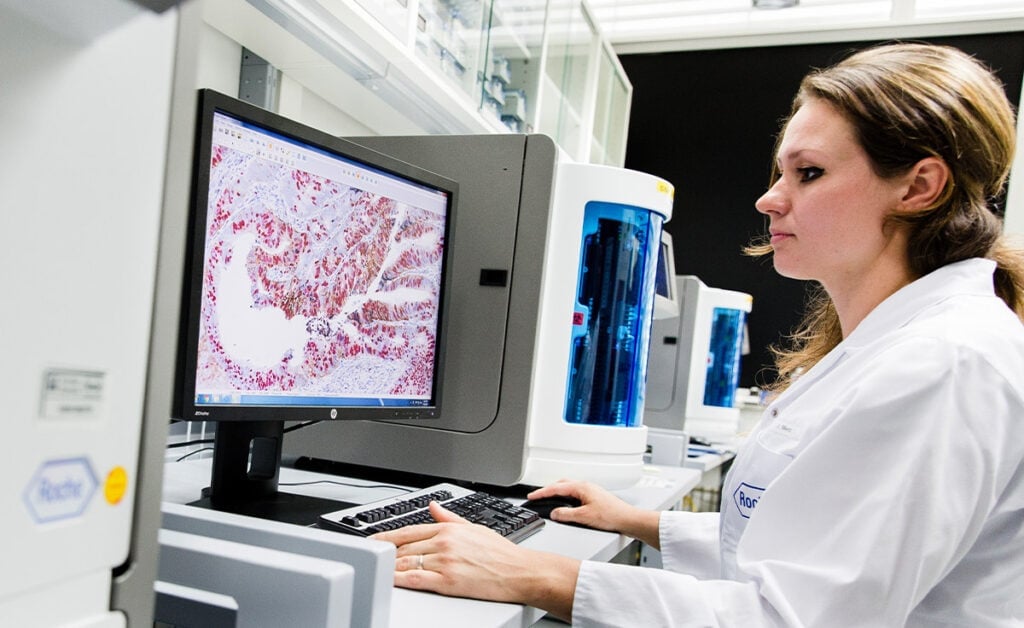
Labs must continue to evolve and innovate if they are to handle increases in demand.
At its core, digital health represents much-needed linkage between data science and healthcare, comprehensively connecting the dots for better, more informed health decisions — providing early warning for infectious disease outbreaks, and real-time information to inform disease control and elimination programmes that can improve diagnosis and patient management. For digital innovation to truly transform health systems though, policymakers must smooth the path and with it, leverage technology that can address some of the gaps created by an existing laboratory workforce shortage.11
Despite the falling number of laboratory staff, millions of COVID-19 tests are being performed around the world. To manage the pandemic-led increase in demand, and jump in routine testing that will likely happen post-pandemic, laboratories need solutions that enable greater efficiency and ensure they are well-prepared to handle future outbreaks.
Automated and fully integrated core labs can deliver high-quality and accurate results. With the focus of regulatory agencies shifting to data veracity and traceability, lab automation can deliver on this promise.
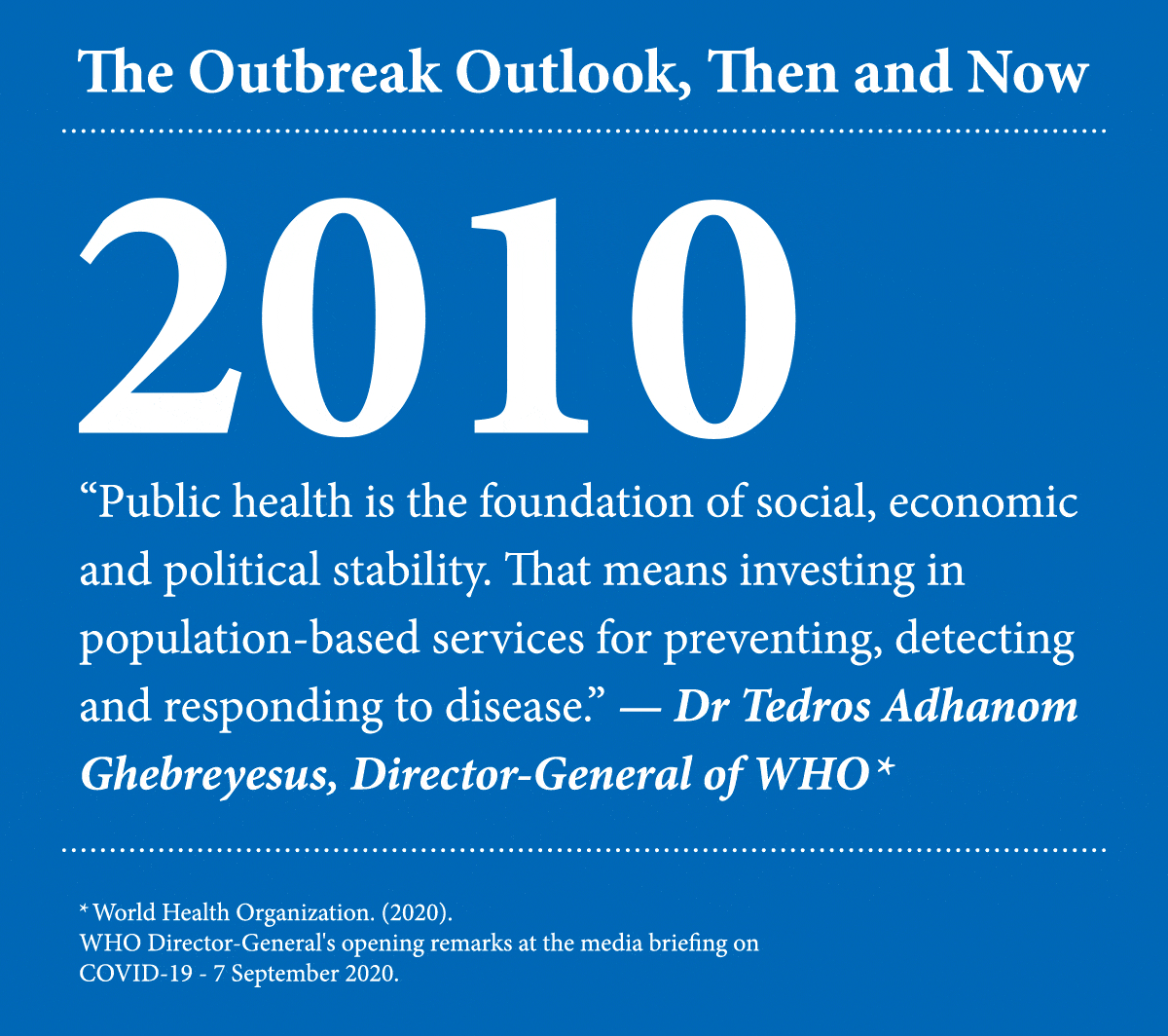
There is no doubt that finding a solution to the laboratory workforce shortage is a complex task but taking corrective action can ensure countries have enough trained lab professionals to meet future demands.
Every country is learning that diagnostics, which until recently has been a sector often underfunded12 or hampered by inflexible regulations and lack of co-ordination, is a crucial first step to fight infectious diseases before they spiral out of control. However, stumbling blocks remain, and addressing these must become a national priority. With diagnostic tests requiring dozens of components, misguided planning can cause testing bottlenecks and, as we saw with COVID-19, widespread shortages.
Fighting on all Fronts
The current pandemic has exposed just how vulnerable health systems are, but it has also given us a real-world example of collaborative action. The world has successfully eradicated infectious diseases in the past, and we can do the same again with a sustainable approach to public health policies. As more countries and stakeholders recognise this, the region’s chances of fighting infectious disease will improve dramatically.
Is Asia truly prepared for the next outbreak? That will depend on the lessons we learn today —whether or not we act on them will be the true test.
Read more healthcare and diagnostics news at Roche publications.
References:
1United Nations. (2020). Coronavirus update: COVID-19 likely to cost economy $1 trillion during 2020, says UN trade agency. Retrieved from https://news.un.org/en/story/2020/03/1059011
2Oppenheim B, Gallivan M, Madhav NK, et al. (2019). Assessing global preparedness for the next pandemic: development and application of an Epidemic Preparedness Index. BMJ Global Health. 4:e001157.
3Indrarajah T. (2020). Exclusive Research: Is Asia prepared for the next big epidemic? GovInsider. Retrieved from https://govinsider.asia/smart-gov/how-can-digital-patient-data-be-protected/
4Mukherjee, S. (2017). Emerging Infectious Diseases: Epidemiological Perspective. Indian J Dermatol. 2017 Sep-Oct; 62(5): 459–467.
5US National Institute of Allergy and Infectious Diseases. (2020). Tuberculosis. Retrieved from https://www.niaid.nih.gov/diseases-conditions/tuberculosis
6Bhatia V, Srivastava R, Reddy KS, et al. (2020). Ending TB in Southeast Asia: current resources are not enough. BMJ Global Health. 5:e002073.
7The Economist Intelligence Unit. (2020). Cancer preparedness in Asia Pacific: Progress towards universal cancer control.
8World Health Organization. (2020). WHO: access to HIV medicines severely impacted by COVID-19 as AIDS response stalls. Retrieved from https://www.who.int/news-room/detail/06-07-2020-who-access-to-hiv-medicines-severely-impacted-by-covid-19-as-aids-response-stalls
9The Asia Pacific Medical Technology Association. (2020). Building Regulatory Agility for Adequate Access to Quality SARS-CoV-2 Test Kits During the Global Pandemic.
10Whitelaw S, Mamas MA, Topol E, Van Spall HGC. (2020). Applications of digital technology in COVID-19 pandemic planning and response. Lancet Digital Health. 2: e435–40.
11Metter DM, Colgan, TJ, Leung, ST, et al. (2019). Trends in the US and Canadian Pathologist Workforces From 2007 to 2017. JAMA Netw Open. 2(5):e194337.
12Nature Biotechnology. (2020). The COVID-19 testing debacle. Nat Biotechnology 38, 653.
